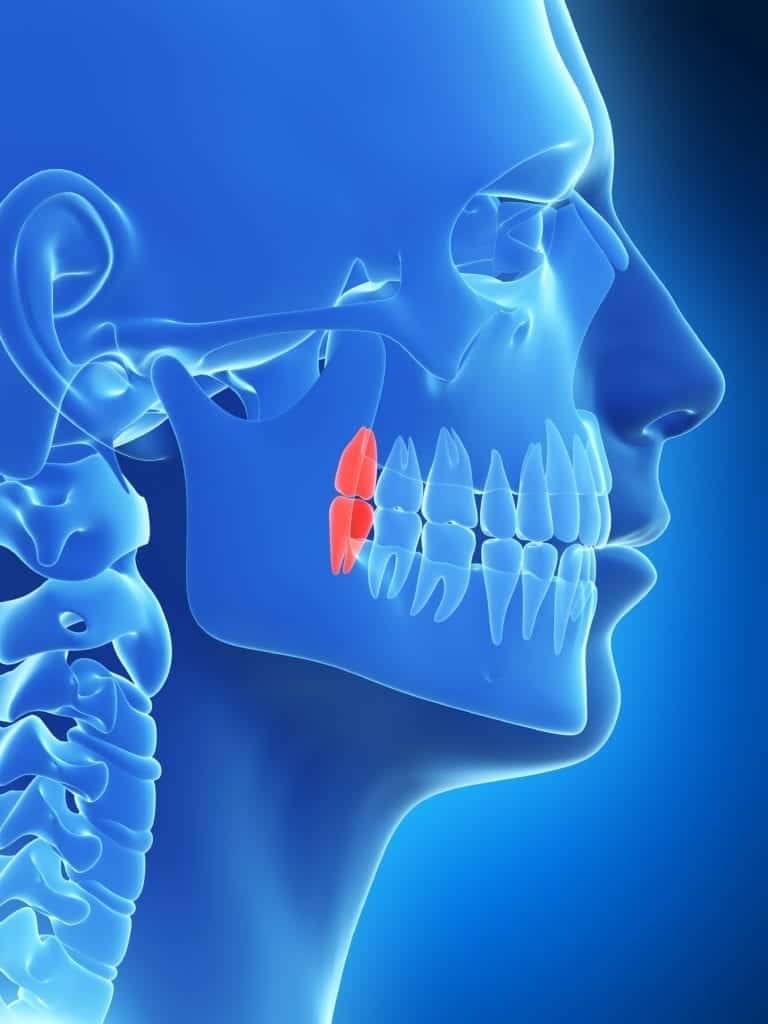Off the top of your head, do you know how many teeth you have? Did you just attempt to count your teeth using your tongue? As much as we use our teeth on a daily basis for things like chewing and speaking, many people don’t know too much about them. Although there are many interesting things to know about teeth, let’s start at the beginning by answering the question, “how many teeth does a human have?”
The short answer is that humans have 20 primary teeth and 32 secondary (permanent) teeth during their lifetime. While the short answer may earn you some trivia points, it does little to teach you about what your teeth actually do and why they are so important. For that, you need the longer answer.
With the longer answer, let’s take things one step further by breaking down these 32 permanent teeth. The 32 teeth inside your mouth are comprised of:

- 8 incisors
- 4 cuspids (canines)
- 8 bicuspids (premolars)
- 12 molars
- 4 wisdom teeth
Incisors
The incisors are the teeth in the center of your smile, with four on the top arch and four on the bottom arch. Incisors are the first baby teeth to erupt and fall out, as well as the first permanent teeth to erupt. Primary incisors erupt around the age of 6 months and fall out around age 6 to make room for the secondary incisors to erupt. They have a flat, wide appearance and function in the same way a chisel would. Their sharp edges are used for biting food into smaller pieces.
Cuspids
Working away from the center of your smile, the cuspids come next. There are two cuspids on the top arch and two cuspids on the bottom arch. Primary cuspids generally erupt between the age of 16-20 months, starting with the upper arch. However, secondary cuspids begin to erupt around the age of 9, but start with the lower arch. The cuspids are also known as canine teeth because of their pointy appearance. This pointy, sharp edge allows the cuspids to tear up food.
Bicuspids
Next comes the bicuspids, or premolars. There are eight bicuspids, four bicuspids on the top arch and four on the bottom arch. Bigger than the incisors and canines, but smaller than the molars, the bicuspids have a flatter top surface with various ridges used to grind food into smaller pieces. Bicuspids do not erupt in humans until the age of 10, meaning there is only one set of bicuspids that are permanent teeth.
Molars
Molars are the large teeth located in the back of your mouth. Humans have six upper molars and six lower molars, totalling twelve molars! The first set of molars generally erupts around age six, the second set erupts around age 12, and the third set erupts around age 17-25. Out of all your teeth, your molars are the strongest and are used to grind up food so that it can be safely swallowed.

Wisdom Teeth
Your third molars are more commonly known as your wisdom teeth. Unfortunately, these teeth usually need to be extracted because they do not fit properly in the mouth. Wisdom teeth are a functionless organ leftover from our evolutionary past. Thousands of years ago, humans had larger skulls and tougher diets that required additional chewing power. Nowadays, eating has become easier and our skulls have become smaller than our ancestors. This means that the third molars have problems erupting entirely and can cause problems like pain, swelling, and infection.

Dr. Dennis Laurich has been practicing dentistry for over 40 years. He received his DDS degree from the University of Michigan Dental School and regularly attends oral health care conventions to continue his dental education. This allows him to treat patients with the leading dental technology and methodologies. Additionally, he is a member of the American Dental Association, Michigan Dental Association, and the Detroit District Dental Society.
Dr. Dale Flanagin II is a distinguished professional in the field of dentistry, holding a Bachelor’s degree in Molecular Biology and Biotechnology as well as a Doctor of Dental Surgery degree. He is committed to improving the lives of others through his work, driven by a lifelong passion for helping people.





